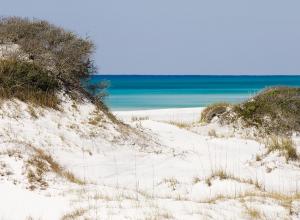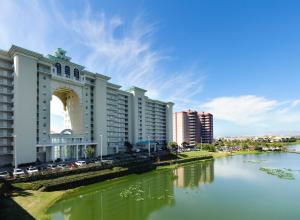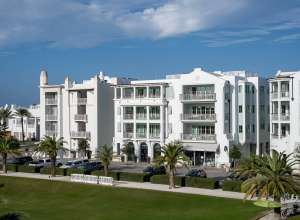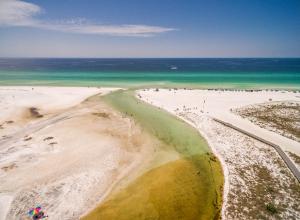Story
CBA Spins Up Impressive Water Quality Dashboard
December 27, 2022 by SoWal Staff

The Choctawhatchee Basin Alliance does an impressive amount of work in our area and one of the largest parts of the mission is sampling and measuring water quality.
Check out the new comprehensive dashboard with data from more than 25,000 samples >
Data from all 133 water-quality stations is displayed in some pretty cool visuals. Thanks to all those who support water quality monitoring, which provides a baseline of information about our waterways: University of Florida Lakewatch, Walton County Board of County Commissioners, Florida, Okaloosa Board of County Commissioners, The J.W. Couch Foundation, Destin Water Users, Regional Utilities, and South Walton Utility, as well as the hundreds of citizen scientists who have collected data over the last twenty-plus years!
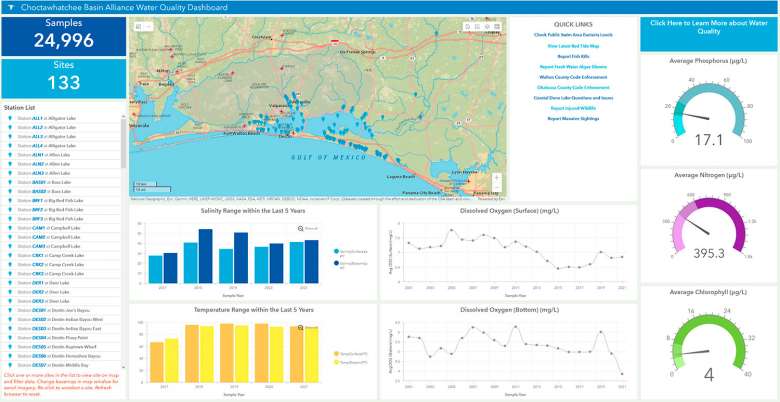
- Quick Links -
Check Public Swim Area Bacteria Levels
View Latest Red Tide Map
Report Fresh Water Algae Blooms
Walton County Code Enforcement
Okaloosa County Code Enforcement
Coastal Dune Lake Questions and Issues

CBA Water Quality Parameters __________________________________
Temperature (°F)
Definition: Temperature is the measurement of the heat energy of
the water. CBA measures in degrees Fahrenheit while many
agencies use degrees Celsius. Influencing factors of temperature include seasons and climate,
depth of water, flow and volume of water, turbidity, stormwater runoff and discharge of
municipal or industrial effluent.
Importance: Temperature affects biodiversity. Aquatic animals can adapt to live in each
waterbody over a range of temperatures. However, if the water temperature changes rapidly
and exceeds the acceptable range for various aquatic organisms, those organisms may die,
become stressed, or become excluded from their habitat. Temperature also influences other
parameters such as dissolved oxygen.
Salinity (PPT)
Salinity is the measure of all the salts dissolved in water. Practical Salinity Scale (PSS) is expressed as the
more commonly known form of Parts [of salt] Per Thousand [parts of solution] (PPT). The Gulf of Mexico
salinity is around 35 PPT, Brackish water (salt and freshwater mixed) is a range from 0.5-25 PPT, and
freshwater is around 0-0.5 PPT.
Importance: Salinity affects biodiversity. Aquatic organisms adapt to live in a variety of salinity
levels. However, if salinity changes rapidly, organisms may be excluded from their habitat in
order to survive.
Dissolved Oxygen (mg/L)
Definition: Dissolved Oxygen is the amount of oxygen dissolved in water and is measured as a
concentration in milligrams of gas per liter (mg/L) and as a percent-saturation (how much oxygen the
water can hold at a given temperature). Dissolved Oxygen is a by-product of photosynthesis in aquatic
plants and algae. It is also created by diffusion from the atmosphere and aeration (moving water creating
waves).
Importance: Dissolved Oxygen is one of the best indicators of water quality, as all aquatic organisms
need it to survive. Most aquatic organisms cannot fully function in areas of low DO (≤ 6 mg/L) and very
little life can live at or below 2 mg/L (known as “hypoxic zone”, denoted by a red line on our Dissolved
Oxygen graphs). Fish, invertebrates, bacteria and fungi all require Dissolved Oxygen.
Total Nitrogen
Total Nitrogen (TN) is the measurement of the amount of ammonia and organic nitrogen in a waterbody.
Nitrogen naturally occurs in the environment (the air). Human activity such as like landscape fertilization,
crop fertilization, wastewater disposal, stormwater run-off, or livestock/pet waste can contribute to
nitrogen levels in a waterbody. Nitrogen becomes harmful to the waterbody when it is in excess. This can
cause algae blooms and increases in chlorophyll-a, which uses up the dissolved oxygen in the water,
killing aquatic organisms.
Importance: Total Nitrogen (TN) is critical for plant, animal, and bacteria growth.
Total Phosphorus
Total Phosphorus (TP) is the measurement of all forms of phosphorus in the water. Phosphorus naturally
occurs in the environment, common in rocks and soils. Human activities like landscape fertilization, crop
fertilization, wastewater disposal, and stormwater run-off can contribute to phosphorus levels in a
waterbody.
Importance: Total Phosphorus (TP) is critical for plant, animal, and bacteria growth.
Chorophyll
Definition: Chlorophyll are the green pigments found in plant and algae tissues. It is measured in
micrograms per liter of water (abbreviated μg/L). It is used as an indicator for planktonic algae biomass,
or abundance.
Chlorophyll-a is greatly influenced by nutrient (TN & TP) inputs into a waterbody. Generally, when TN and
TP increase, chlorophyll-a increases as well. This can lead to algae blooms, which reduce the available
amount of dissolved oxygen for aquatic organisms.
Importance: Chlorophyll is the building block of all plant life. Chlorophyll allows plants and algae to use
sunlight in the process of photosynthesis for growth.
Trophic State Classification (TSI)
The Trophic State Classification System is one method scientists use to quickly and easily describe the
biological productivity of a waterbody. The Trophic State Classification System classifies lakes and/or
waterbodies into one of four trophic states:
♦ oligotrophic - waterbodies with low productivity
♦ mesotrophic - waterbodies with moderate productivity
♦ eutrophic - moderate-to-highly productive waters
♦ hypereutrophic - highly productive waters


